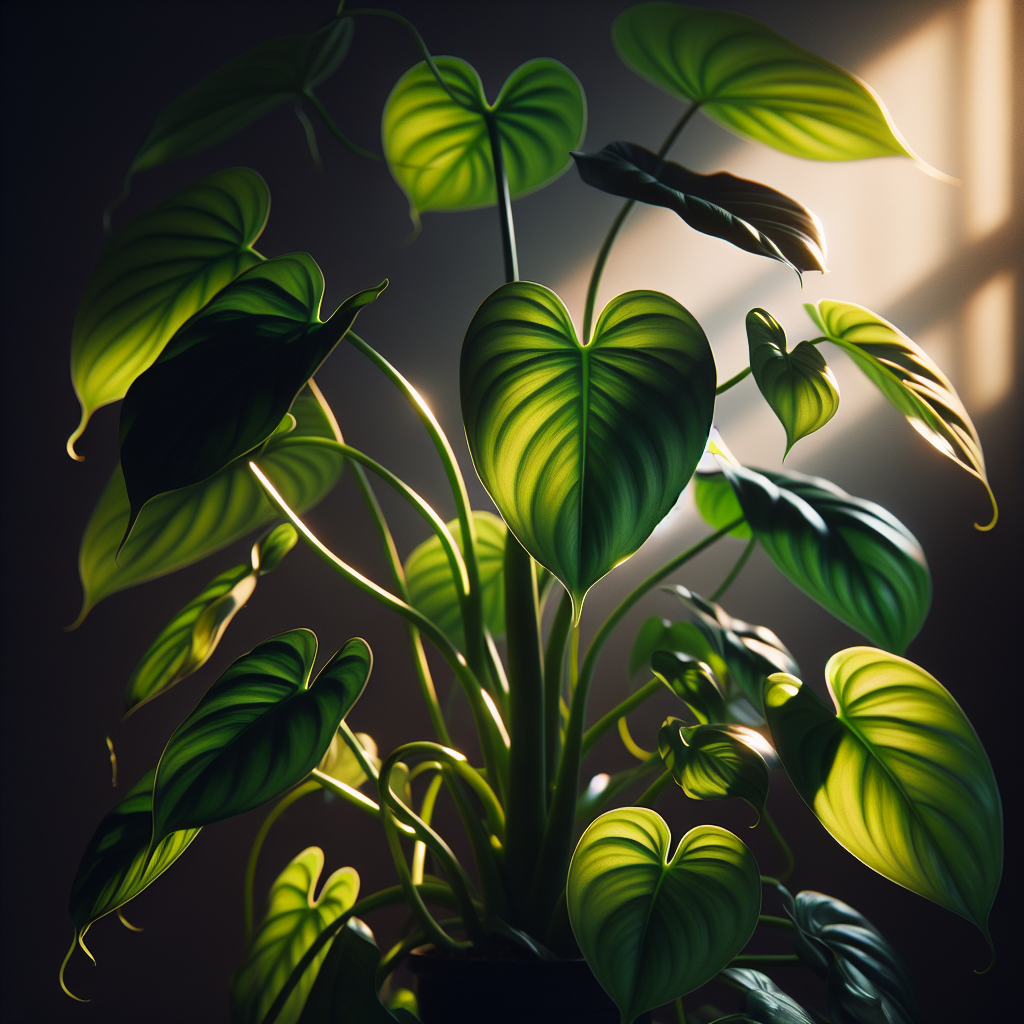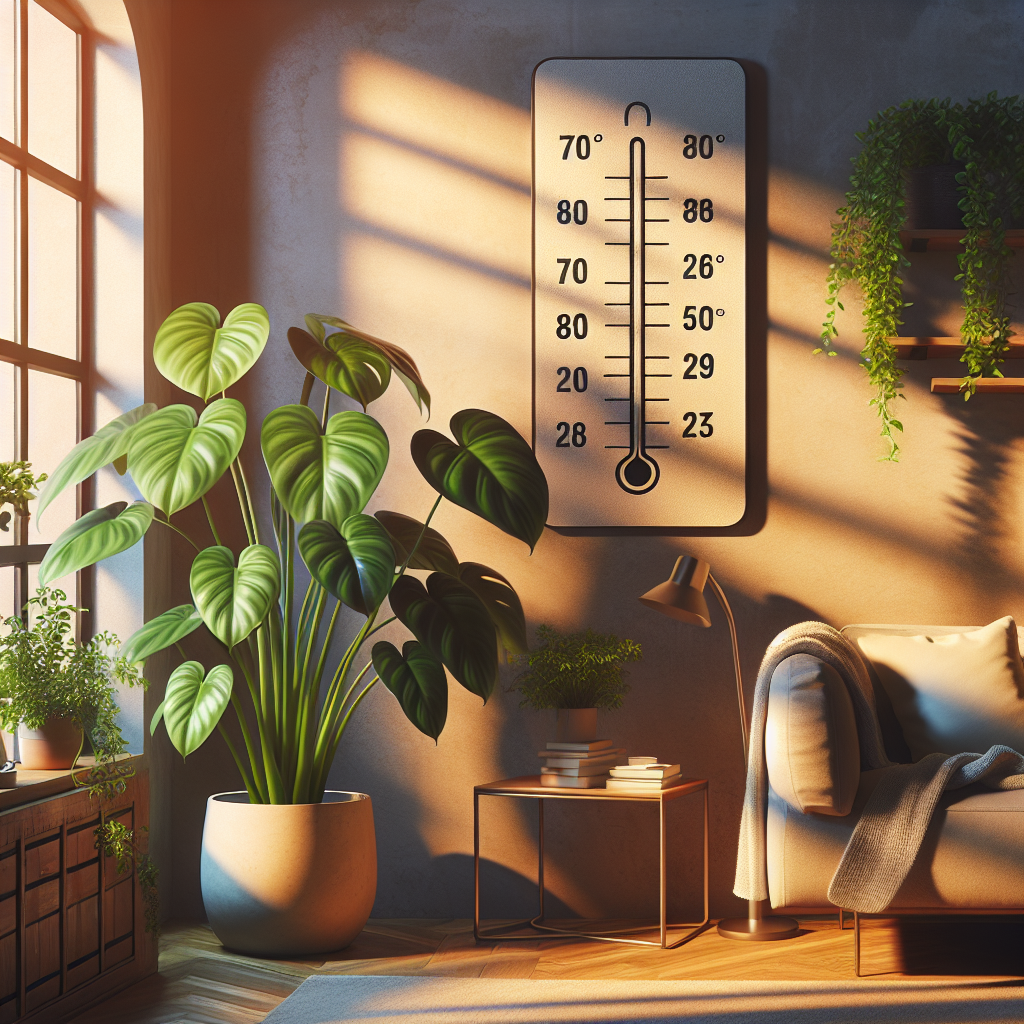Did you know that philodendrons are one of the most popular houseplants in the world? In fact, a recent survey found that over 60% of plant parents own at least one type of philodendron! If you want your philodendron to thrive, creating the right environment is key.
Philodendron Basics

Before we dive into care tips, let’s cover some philodendron basics:
-
Philodendrons are tropical plants that come in climbing and non-climbing varieties
-
They have glossy, heart-shaped leaves that can be solid green or variegated
-
Most types of philodendron are easy to care for, even for beginners
-
With the right environment, philodendrons can live for many years
Now that you know a bit about these beautiful plants, let’s look at how to create the perfect philodendron home.
Lighting

One of the most important things philodendrons need is the right amount of light. Here are some lighting tips:
-
Philodendrons do best in bright, indirect light
-
Avoid direct sunlight, which can scorch the leaves
-
If your home doesn’t get much natural light, use grow lights
-
Rotate your plant every few weeks so all sides get even light
Watering

Proper watering is also crucial for keeping your philodendron healthy. Follow these guidelines:
-
Water when the top inch of soil feels dry
-
Use room-temperature water to avoid shocking the roots
-
Water thoroughly until it flows from the drainage holes
-
Empty the saucer so your plant isn’t sitting in water
-
Mist the leaves occasionally to boost humidity
For more information, check out our post on the watering needs of philodendron brasil.
Soil

Philodendrons need soil that drains well but still holds some moisture. You can use a mix of:
-
1 part potting soil
-
1 part perlite
-
1 part peat moss or coco coir
Or buy a pre-made aroid mix from your local garden center. Learn how to replant your philodendron in the perfect soil.
Temperature

Since philodendrons are tropical, they prefer warm temperatures. Aim for:
-
Daytime temperatures are between 70 and 80°F (21-27°C)
-
Nighttime temperatures above 55°F (13°C)
-
Avoid cold drafts or heat/AC vents
If your home is on the cooler side, consider getting a small space heater for your plant room.
Humidity
Philodendrons also love humidity! While they can adapt to average indoor humidity, they’ll be happiest with levels around 60%. Some tips:
-
Use a humidifier near your plant
-
Place your philodendron on a pebble tray with water
-
Group plants together to create a mini-humid environment
-
Mist the leaves a few times a week
Boosting humidity can help your philodendron grow bigger, lusher leaves. It’s worth the effort!
Fertilizer
To keep your philodendron growing strong, fertilize it regularly during the spring and summer. Here’s how:
-
Use a balanced liquid fertilizer diluted to half strength
-
Apply every 2–4 weeks during the growing season
-
Skip fertilizing in fall and winter when growth slows
-
If leaves are pale or growth has stalled, your plant may need more food
Fertilizer provides the nutrients your philodendron needs that it can’t get from soil alone. Don’t overdo it, though, or you could burn the roots.
Cleaning
Philodendron leaves can get dusty, which makes it harder for them to photosynthesize. To keep your plant clean:
-
Gently wipe leaves with a soft, damp cloth
-
Support each leaf with your hand so you don’t damage it
-
Use a soft paintbrush to get in the nooks and crannies
-
Clean the top and bottom of the leaves
Cleaning also gives you a chance to inspect for any pests or diseases. Do this every few weeks to keep your philodendron looking its best!
Pruning
Philodendrons can benefit from occasional pruning. Reasons to prune include:
-
Removing dead, damaged, or diseased leaves
-
Shaping the plant to keep it tidy
-
Taking cuttings to propagate your philodendron
-
Cutting back leggy growth to encourage bushiness
Always use clean, sharp scissors and cut just above a node. For more help, read our guide on pruning philodendrons.
Repotting
Philodendrons grow relatively quickly and will likely need repotting every 1-2 years. Signs that it’s time to repot:
-
Roots are growing out of the drainage holes
-
plant is top heavy and keeps tipping over
-
soil is drying out very quickly
-
Growth has slowed
Choose a pot the next size up with good drainage. Gently remove the plant from its old pot, place it in the new one, and fill it in with fresh soil. Get step-by-step instructions for repotting philodendrons.
Support
Climbing philodendrons like Heartleaf and Brazil will need some support to grow up rather than trail. You can use:
-
A moss pole
-
A trellis
-
Fishing line to tie stems to hooks in the wall/ceiling
-
A decorative cage or obelisk
Providing support encourages larger leaf growth. Learn how to start training your philodendron to climb.
Troubleshooting
Even with the best care, problems can pop up now and then. Common philodendron issues include:
|
Problem |
Causes |
Solutions |
|---|---|---|
|
Yellow leaves |
Overwatering, underwatering, and and and lack of nutrients |
Check soil moisture, ensure proper drainage, and and and fertilize |
|
Drooping leaves |
Underwatering, low humidity |
Water thoroughly, mist leaves, and and and use a humidifier |
|
Brown leaf tips |
Low humidity, too much fertilizer |
Raise humidity, flush soil, and and dilute fertilizer |
|
Leggy growth |
Not enough light |
Move to brighter spot or use grow light |
If you notice any of these issues, try to identify the cause and take action. Catching problems early is key!
Final Thoughts
Creating the ideal environment is essential to helping your philodendron thrive. By providing appropriate light, water, soil, temperature, humidity, and care, your plant will thrive and grow beautifully for many years.
While philodendrons are easygoing plants, taking the time to provide the best conditions will make a big difference. Refer back to this guide anytime you need a refresher on philodendron care. Your philodendron journey is just beginning!
Feel free to explore our other articles on types of philodendrons like the birkin, silver sword, and more. Happy growing!
creating-a-suitable-environment-for-philodendron-plants